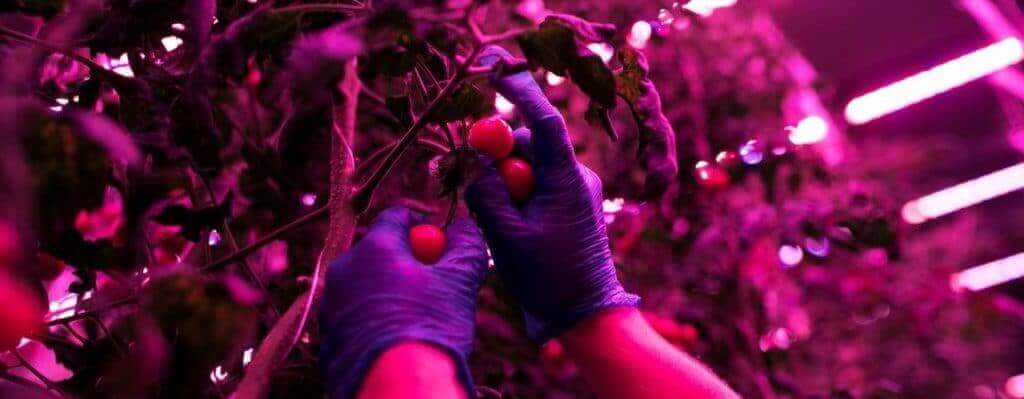Cost-Effective LED Grow Light
Here is a question we received from a reader about how to buy cost-effective LED Grow Lights. It is such a great detailed question and a great detailed answer that it deserves its own post. But first, here is a table of the products I mention in this article.
Here is the question from the new grower:
I’m looking for a good LED light and I want it to be cost effective. I’m new to growing. I got a cheap unbranded LED on eBay stated 300W but actual power is around 85W but for my next grow I want an upgrade. I’m growing a Sensiseeds Northern Lights auto right now. Just one plant but it’s filled out my 2 feet by 2 feet growing area. It’s in flower now and I have the light about 8 inches from the top of the plant. Since it’s an auto I run 18/6 lighting schedule. Is that the right way for auto in bloom?
I’m thinking about getting a new light.
A big factor for me is that it’s cost effective and I get the most grams of high quality bud per watt.
I’m not growing for commercial use but I still want the best bang per buck (or £0.) I’ll grow only one or two plants at a time. Electric is a big part of the cost in the UK so I was looking for LED lights with two switches for grow and bloom as well as dimmable lights using pulse width modulation. Unfortunately I can’t find a cheap light with all these features. Do you have any recommendations?
I’m not sure about COBs though. lots of people like them because they emit white light to the naked eye but this means there must be some green light in the spectrum – much more than with conventional LEDs – so I worry they’ll be less efficient.
What About Watts?
I came across a page comparing Mars lights and grams per watt. Mars claims that the best Mars lights significantly boost yields.
This could make a big difference if it’s genuine but how is it achieved? Is it just a marketing ploy? Platinum LEDs make similar claims about excelling at PAR per watt. The frequency spectrum graphs look very similar. Certainly not indicating huge differences between branded and unbranded lights. LEDs may differ in efficiency and I don’t know by how much. Reflector and lenses can all make a difference too but can these account for the massive differences in grams per watt?
Light is Key
Obviously nutrients and genetics make a difference too but I’m thinking solely about the difference the light makes. I’m only growing one or two plants in a small area so I can use a lower wattage and keep the light low so I don’t think I need to spend a lot on a high power light. But electricity costs over time I think will be the biggest expense.
(I’m currently growing in soil – Canna Terra Professional with added perlite and blood, bone and fish meal – with Floranova series and PK13/14 nutrients and Photosynthesis plus. I’ll be adding molasses to help the microbes do their job better.) MaryJane’s article on nutrients, comparing lots of different varieties and types, talks about some of these additives also.s
No products found.
Also – and this is a tough question – what about the law of diminishing returns? If i switch from the 85W light I have now to one that draws 170W true power will I get double the yield?
Your advice would be appreciated.
Here is the answer from MaryJane Farmer:
Congrats, sounds like the grow’s going well! Quite a few questions and points to address there. So I’ll just start with an explanation of wattage and LED grow lights.
When comparing LED grow lights wattage is really only relevant to your electricity bill. And it’s only the wattage drawn at the wall that you want to know. The wattage in the product name can refer to various different things, so can be a bit misleading.
Different lighting technologies convert the watts drawn at the wall into light more efficiently than others, LED lights being the most efficient at doing so. So an LED light drawing, say, 160W might be more powerful than an HPS light rated at 300W. And to confuse things even further, some LED lights are of course more efficient than others, so our advice at 420Beginner is to consider wattage as a very very rough measure for quick comparison.
Unfortunately, however, the information you want (PAR values) is either buried deep in the seller’s description, or for cheaper lights, not available at all. So we still describe lights in terms of wattage as shorthand for the actual light efficiency and as a means of making a rough comparison. For example, a light described as 300W usually means it is equivalent in brightness to a High Intensity Discharge (HID) light drawing 300W of current. The LED light described as 300W will probably only draw around 180W more or less, but will provide roughly the same brightness as the 300W HID.
What you need to look at is PAR values.
PAR, as you might know, is photosynthetically active radiation, referring to the spectrum of light a plant can actually use for photosynthesis. “PAR values” generally actually refers to PPF or PPFD which is a measure of how many photons of light (µmols, or micromols) in that spectrum are falling on your plants per square metre per second.
Good manufacturers will provide charts/diagrams of PAR values with the light hung at different heights and how values differ across the footprint. You can see one example of a chart of PAR values at the top of this page. PAR values are highest in the centre of the footprint getting lower toward the edges, but some lights give more even distribution than others. You need to look at that chart when making exact comparisons from one light to another.
Yield Calculations are Hard to Find
Unfortunately, grams per watt, grams per joule and other measures of efficiency vs. yield are hard to find and rarely listed by manufacturers. This is probably because there are too many variables in growing weed to say with confidence that one light is better than another. However, you can consider some of the information in the interview with our friend in Italy, Gianpaolo Grassi, who is one of the most experienced scientists in cannabis growing. So my advice would be to compare PAR values and wattage drawn at the wall, of the lights within your price range, and get the light with the best PAR values for the lowest wattage drawn. And if you’ve got any info about the light preferences of the strain you’re going to be growing, take that into consideration too.
Regarding spectrum, blue and red light are obviously very important to cannabis plants, but the wavelengths in between also have some value, which I discuss in my Beginner’s Guide. So don’t worry too much if there’s some green light included in the spectrum. It’s not wasted light, and I’ve yet to see any light that’s so badly balanced that it’s emitting pointlessly, inefficiently large amounts of green light.
In other words, don’t discount COBs on the basis that they produce “white” light. So does the sun, and when wild cannabis gets enough of that it can grow to massive sizes! Here is a quality, cost-effective COB light:
- Patented Products with A Unique Appearance: The perfect mix of 6 high lux Cree COB LEDs and a 3W LED chip for max. efficiency, and energy-saving; VIVOSUN’s blooming product is made up of aluminum and polycarbonate material, making it a product that is elegant and exquisite
- Effectively Promotes Growth: The scientific, full-spectrum 410-730nm values ensure VIVOSUN's 1200W LED Grow Light and bloom switches are, indeed, effective; Different wavelengths imitate natural sunlight to provide plants with everything that they require
- Powerful Cooling System: The 2, built-in large heat sinks guarantee high efficient heat dissipation and lasting durability; The cooling fans are so quiet that you can hardly hear any sound through an enclosed growing tent
- Energy-Saving: Compared to the traditional HPSL and MHL light, VIVOSUN's LED Grow Light is 80% electric energy saving and can be up to 90% light absorbing effect; This maximizes yield quantity and quality
- Guaranteed Quality and Results: VIVOSUN guarantees your satisfaction in vegetation growth and flowering; To back our confidence, our product comes with a 3-year warranty and a 30-day, hassle-free, return guarantee
By the way, ultraviolet LEDs are the least efficient, so don’t worry too much about getting a light with UV in the spectrum. By all accounts, just adding in a cheap UV aquarium light during flowering will get you better results for less money than UV LEDS.
Budget LED Grow Lights
For budget lights, I usually recommend MarsHydro. This Chinese manufacturer tends to have better components and PAR values than many of the less established budget brands and they have well-established US customer service. You don’t see too many complaints about them from home growers. They mostly don’t have loads of features, but what they do, they do well. Here are some low cost Mars lights for small grow operations.
https://420beginner.com/product/mars-hydro-ts-600-led-grow-light-for-indoor-plants-2/
Speaking of features, you’re right about dimmer switches. Most so-called dimmers just turn off some of the LEDs, which could negatively affect the evenness of coverage and energy efficiency. A proper dimmer switch that could dial up the red light during flowering could help your electricity consumption, but proper pulse width modulation dimmers are rare at the budget end. The only real way to measure this over your entire grow space is with a light meter, comparing values at various locations and at various dimming levels. Here is a low-cost meter of good quality:
- Measures luminosity from 0 to 200,000 Lux and ambient temperature
- High accuracy of ±3% rdg ± 8 dgts (<10,000 Lux), ±4% rdg ±10 dgts (>10,000 Lux)
- 4 digital color LCD screen, MIN/Max readings, data hold, auto power off, and low battery indication
- Wide range of application, use lux light meter for set design, factory, office or home use
- lightweight and compact, 2 years long period warranty
Fixed Spectrum vs Dimmers and Other Debates
Also, bear in mind that there’s a lot of debate about whether you get better results from using a fixed spectrum for the whole grow (maybe adding in supplemental red and UV lighting during flowering) or using a light with bloom/grow or veg/flower switches. So maybe consider whether you definitely want dimmers. As far as I can see, which is the better method depends somewhat on what you want from your end product. For instance, if time is of the essence, not making a major change to the spectrum arguably gives you slightly quicker grow times, as the plants don’t need to adapt themselves to a new spectrum. Keeping a fixed spectrum and dialing up the red and UV arguably better mimics the sun when cannabis would naturally start flowering.
How many hours a day?
Regarding autoflowers, 18/6 is fine. But you could even go to 24 hours of light, in theory, although I do not recommend that. As you probably know, regular cannabis needs 12 hours of dark to trigger flowering and not revert back to veg, but autoflowering doesn’t need that signal. I have another post about lighting schedules that gives a little more detail. Many growers argue that giving your plants a rest period will still be beneficial. Maybe research a bit more and test a different light schedule on your next grow.
A quick word about DLI, daily light integral. Basically, that refers to how much light a plant needs per day. For maximum energy efficiency, work out how much energy your light can emit per hour. Cannabis requires more light than most plants, so figure that you want a DLI of 15 or more for the entire 24 hours. Then leave the lights on only long enough to give your plants what they need for the day.
Mols per hour calculation would be: µmols x 60 x 60 / 1,000,000. (The µmols refers to the light’s PAR values.) Also, remember to calculate it using the PAR values at the correct hanging height for each grow stage, and add a bit of extra time to allow for the fact that PAR values will vary across the footprint.
Best LED Chips
Regarding the merits of more expensive lights, what you’re usually paying for (besides extra features) is a higher quality of LED chips and certain other components, such as the driver. Often, higher-priced lights have passive cooling, too, rather than fans. The best LED chip manufacturers include CREE, Samsung, and Osram; and a name-brand diode tends to be better, in general, than no-name diodes. Meanwell is a trusted brand name for drivers.
DIY LED Grow Lights
Possibly the most efficient LED lights right now are quantum boards from Horticulture Lighting Group.
- HIGHEST EFFICIENCY LED GROW LIGHTING: HLG 65 V2 lamp is designed with our high efficiency white light quantum board with a total of 120 Samsung LM301H LEDs; This horticulture LED grow light produces 10,000 lumens with just 65 watts of power
- 4000K VEGETATION LIGHT: These farming lights feature 4000K white light full spectrum for vegging, clones, supplemental lighting or a small plant; Equivalent to 150W T5, 200W CFL output or 150W metal halide grow lights. Footprints are Flower 2x1 ft or 1x2 ft and Veg 2x2 ft; Total output is 152 PPF at 2.35 μmol/j; Dimensions are 11” x 9.5" x 2"
- BETTER CANOPY PENETRATION: Full Spectrum white light diffuses evenly, making it ideal for full veg / flower cycles plus healthy, uniform growth so there will be no more brown tips
- PASSIVE COOLED DESIGN: The agriculture LED lights feature a reliable passive cooling design for reduced heat, which means better temp control for your indoor herb garden
- DESIGNED & ASSEMBLED IN USA: Grow lighting leader, HLG, designed the 1st high-density modular light engine for horticulture and through constant innovation, has led the way in developing efficient, effective growing lights. This HLG indoor grow lamp comes with a 3-year warranty.
They offer a great balance between price and power, with nice even coverage (more info at that link). To save extra money, you can buy them as kits or buy individual components and assemble them yourself. If you’re happy with that sort of DIY, there’s lots of info out there about assembling and customizing them. But you can also get pre-assembled, dimmable quantum board lights.
To get more out of your existing light(s), have a look into plant training methods. You can use techniques like Low-Stress Training, Sea of Green, Screen of Green, mainlining, topping, fimming, super cropping, etc. to create a more even canopy height, create more bud sites and expose more of the plants to the light. Same grow light, but more of its photons hitting your plant. Those kind of methods can be a great way to increase yields without extra expense (besides cheap things like plant ties and stakes). I discuss some of the most basic methods here.
OK, I think that’s everything! 🙂 Hope it helps!
And by the way, you can download my Free Beginner’s Guide here. We also have contests, coupons and discounts from time to time for registered readers.
Send me suggestions, questions or criticisms below in the comments. I would love to hear from you. And send your photos too. MaryJane@420Beginner.com
Last update on 2023-02-20 / Affiliate links / Images from Amazon Product Advertising API
This product was presentation was made with AAWP plugin.









